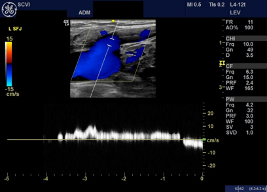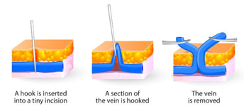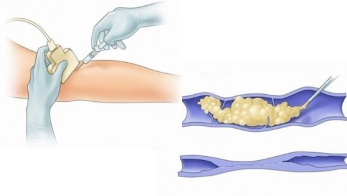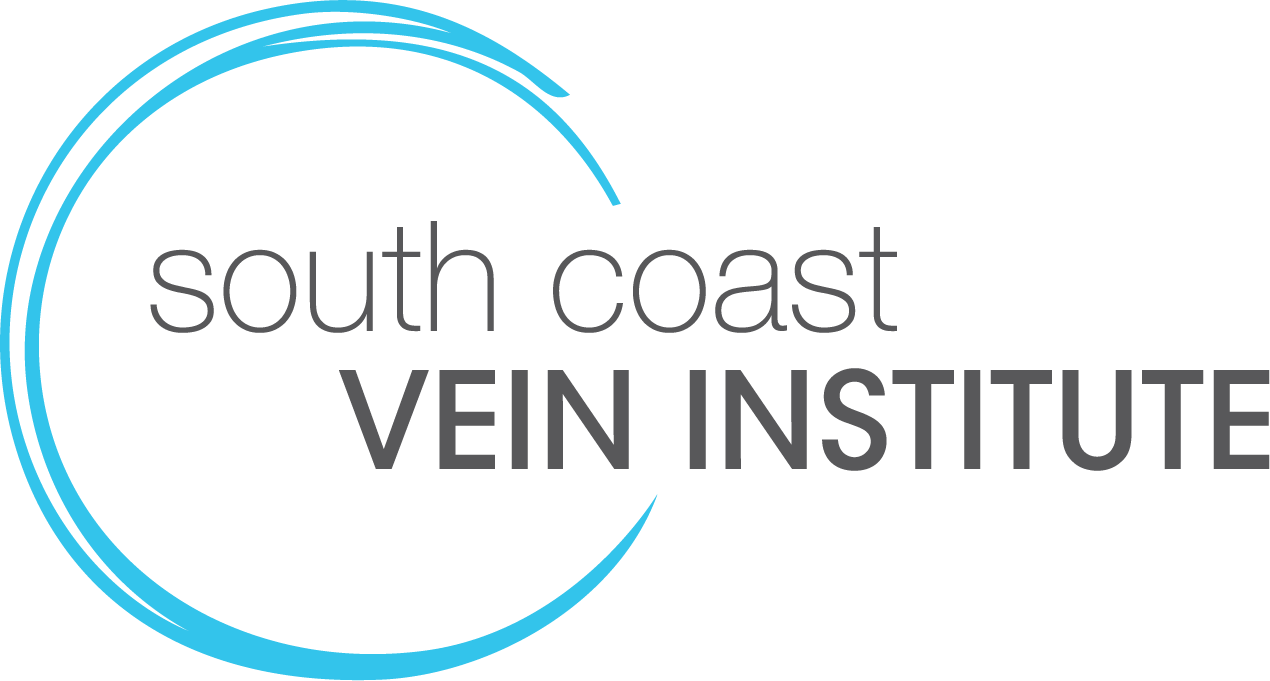Treatments
Vascular Ultrasound
At South Coast Vein Institute, ultrasound examinations are performed by our specially trained medical sonographer. A thorough assessment of your veins is done prior to your initial consultation with the surgeon.
Doppler ultrasound examinations are used to assess where varicose veins are located within the legs and also determine the source of the veins. During an ultrasound veins in the deep system of the leg are also checked.
Knowing the venous anatomy and which veins are diseased enables optimal treatment planning. Ultrasound is also performed after some treatments to assess the veins’ response to treatment and also to exclude any complications.
The initial ultrasound takes approximately 45min to complete. No fasting or preparation is required. During your examination you will lay on the ultrasound bed with your head elevated. Water-based ultrasound gel will be applied to your legs and a transducer will be moved over the skin to take images of your veins.
The results of your ultrasound are available for the surgeon at your initial consultation. The initial ultrasound is bulk-billed at no cost to you.

Micro Phlebectomy
Microphlebectomy is a procedure to remove varicose veins. Local anaesthetic is injected around the veins, and the veins are excised through small incisions (“micro”) in the skin overlying the visible varicose veins. There are small segments of veins that remain and those usually occlude. Microphlebectomy is quite an effective and direct way of treating varicose veins. No sutures are usually required.
The leg is bandaged following the procedure. The bandages stay on for four days and when removed stockings are worn for four weeks. Patients usually need to cease work for four to seven days depending on the extent of the procedure. Post-procedure bruising to the area will be likely and will remain for up to four weeks. A follow up appointment will be made for 2 weeks post procedure to check the incisions.

Sclerotherapy - Ultrasound guided
Ultrasound guided sclerotherapy (UGS) involves injecting sclerosant into abnormal veins that are beneath the skin. With ultrasound guidance our surgeon can directly guide the injections into the abnormal veins. Once injected the veins will collapse and gradually be resorbed by the body.
The number of injections and type of sclerosant will be determined at the time of your initial assessment. After the procedure you will be required to wear compression stockings but will be able to return to work and normal activities.
Radiofrequency Ablation
Radiofrequency Ablation (RFA) is a treatment which uses heat to close up a diseased vein. This treatment is often used instead of traditional vein surgery. RFA has decreased risk of complications occurring compared to traditional surgery and a quicker recovery.
This treatment is done using local anaesthetic in a procedure room with the patient awake and talking.
Local anaesthetic is injected around the vein with multiple injections to numb the area. A catheter is inserted into the vein and then heated up. The vein becomes coagulated/closed by heat. This process is repeated down the targeted vein as to achieve vein adequate closure. The patient normally does not feel anything during this part of the treatment.
Following the procedure, a bandage is applied and the patient can go home. Patients remove the bandages 24 hours after the procedure and the prescribed compression garments worn for four weeks. Normal work can be resumed the day after treatment, or slightly longer for patients whose work involves strenuous activity or prolonged standing. Follow up ultrasounds are scheduled to assess the treatment and exclude any complications.
Medical Adhesive Closure (Glue)
Medical adhesive (glue) can be used to occlude diseased veins. This is the same type of glue that is used to treat skin lacerations. This treatment option is an alternative to radiofrequency ablation (RFA) and is often used where a patient’s veins may not be suited to RFA treatment due to the veins being too close to the skin.
An advantage of using glue to close a vein is that only one injection of local anesthetic is required where the catheter is introduced through the skin. The catheter passes through to the vein and glue is administered to close the vein. Its effectiveness is comparable to RFA. Stockings are not required to be worn after medical adhesive vein closure.
Post treatment recovery and review are the same as the radiofrequency ablation procedure.
Sclerotherapy
Sclerotherapy is a treatment where a sclerosant is injected into a vein using a very small needle. Sclerosant is a chemical solution which causes irritation of a vein. This causes it to form scar tissue over a period of days to weeks which causes the vein the collapse and close. Sclerotherapy can be performed using ultrasound guidance or by direct vision.
There is normally inflammation associated with this process which can either be minor or extensive, and vary from person to person and vein to vein. It can also be associated with bruising/pigmentation.
The sclerosant also spreads into the various branches of the treated vein, filling all the smaller veins. The downside of this spread is that the more it spreads and dilutes, the less effective the treatment is. Therefore, multiple treatments are required. The number of sessions depends on patient expectation and response to treatment.
Once treatment is complete, bandages or stockings are worn. Patients can return to work the day after treatment. Patients refrain from strenuous activities such as vigorous exercise for seven to ten days. Patients are asked to avoid hot baths or showers for seven days.
They type of sclerosant used depends on the vein size and type.
Foam Sclerotherapy: Foam sclerotherapy is a minimally invasive technique where foam sclerosing agent is injected. The sclerosing agent is made into a foam prior to injection for increased volume effect. It is used the treat varicose veins.
Liquid Sclerotherapy: Liquid sclerotherapy is utilised to treat small spider veins which located within the skin. They normally are around 1 mm in size and are usually more a cosmetic problem rather than symptomatic. These veins are not always directly related to venous reflux disease.

Cutera Laser Vein Therapy
Our laser therapy combines advanced technology with flexible parameters to deliver superior results in treatment of leg veins. It treats a broad range of vessels from spider veins to small reticular veins quickly, safely, and effectively.
The number of treatments required depends on the number, colour and size of the vessels being treated. Most patients find that 1-3 treatments are sufficient. Since individual results vary, our team will advise you on the best course of action.
